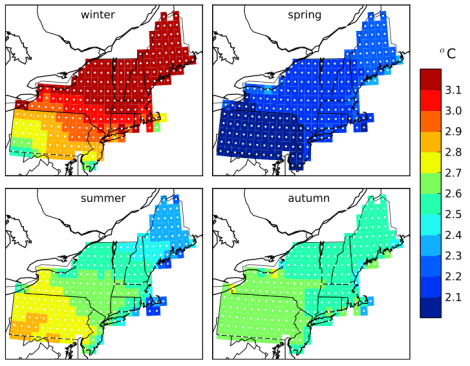A congenital cataract is a condition in which a child is born with cloudiness in the eye’s lens, obscuring the ability to see. Depending on the extensiveness of the cloudiness — in other words, how severe the condition — such cataracts can significantly impair vision.
And, according to new research, there appears to be a correlation between increased temperatures and incidents of congenital cataracts. From Daily Climate:
In the first study to explore a link between extreme heat and birth defects, researchers from the New York Department of Health and The State University of New York at Albany found that even a five-degree increase in temperature during crucial developmental stages in pregnancy increased the odds of an infant developing congenital cataracts.
The cataracts interfere with vision development in babies and are a leading cause of preventable blindness and vision impairment in children. The defect occurs in three of 10,000 births.
Not anymore, apparently.
The study analyzed live birth records from upstate New York — the state minus New York City — from 1992 to 2006. Of those records, 65,750 infants were in utero in the summer during the critical phase when the eye is developed, between weeks four and seven in the pregnancy.
Among those 65,000 children, 6,422 were born with [some type of birth defect]. Researchers found that a five-degree increase in the daily minimum apparent temperature — a formula derived using temperature, vapor pressure and wind speed – increased the likelihood of developing cataracts by 51 percent.
(For those interested — and fluent in researchese — the full abstract is here.)
A 51 percent spike is a big spike, correlated to three factors: heat waves, number of heat waves, and days above the 90th percentile of temperature. That correlation is particularly worrisome given recent findings about the effects of global warming on the Northeast. Here’s a map of what temperatures are expected to look like in the region between 2041 and 2070.

Temperature change in Celsius.
What this suggests is that there will be far more heat waves and, particularly, days in the 90th percentile of warming. And if this study is correct more children requiring surgery after being born with a cloudiness obscuring their vision.



